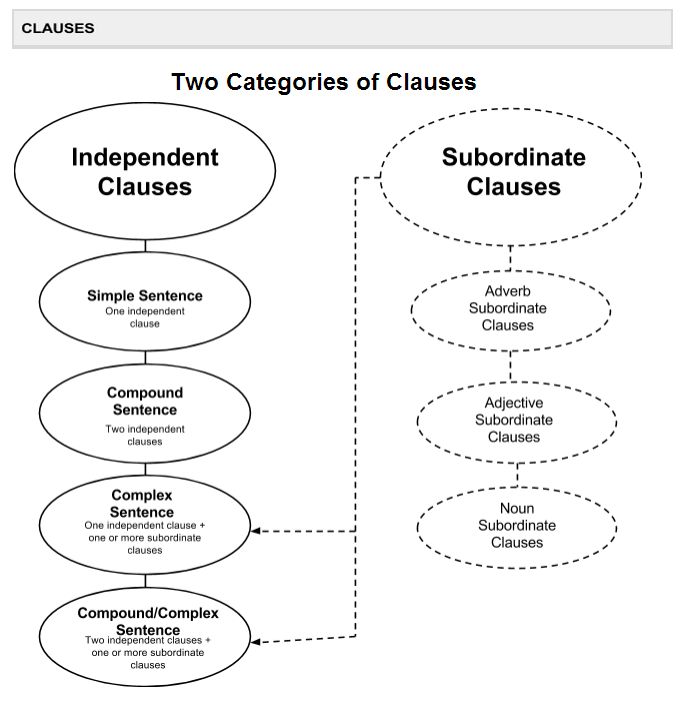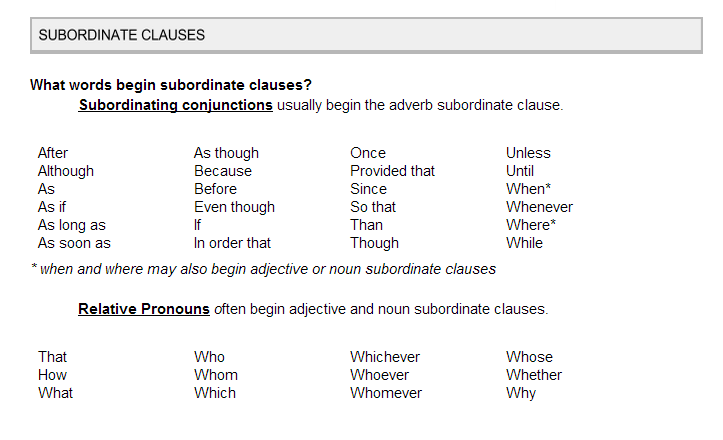

What is the difference between independent and subordinate clauses?
Both categories of clauses contain, by definition, subject-verb combinations; independent clauses, however, can stand on their own as sentences, while subordinate clauses are always subordinate* to (or dependent upon) an independent clause in order to exist in a sentence. Subordinate clauses begin with words that join them to independent clauses; these words are subordinating conjunctions and relative pronouns.
*Subordinate-dependent, inferior, ancillary (Additional; subsidiary)

Clauses can be joined with:
Coordinating conjunctions (join two independent clauses) AKA “FANBOYS” for, and, nor, but, or, yet, so
Rule for Joining: Independent clause, COMMA + COORDINATING CONJUNCTION independent clause
Example: The buses lumbered along the boulevard, and the children eagerly looked for the first sight of Disneyland.
Subordinating conjunctions (join subordinate clause to independent clause)
Some examples: if, since, because, with, when, whether, while
Rule for Joining:
If the subordinating conjunction begins the sentence (or, in other words, is located before the independent clause), always place a comma after it. If it is located after the independent clause, a comma is usually not needed.
Rules for Joining (depends on use: Adjective Subordinate Clause versus Noun Subordinate Clauses):
If the relative pronoun is essential to the meaning of the sentence, do not separate it from the independent clause with commas
If the relative pronoun is not essential to the meaning of the sentence, separate it from the rest of the sentence with commas.
The relative pronoun is not separated from the rest of the sentence by commas unless it is functioning as a nonessential appositive.
Rule for Joining:
When joining two independent clauses together with a conjunctive adverb, put a semicolon before it and a comma after it.